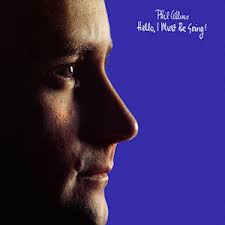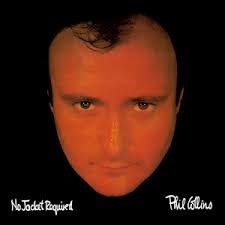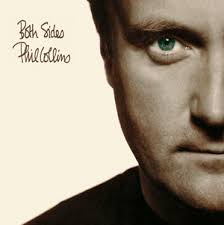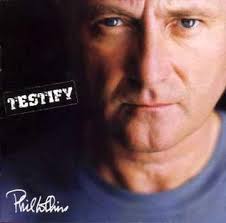Phil Collins Albums Ranked & Reviewed – Complete Guide to Every Studio Album

Phil Collins Albums Ranked & Reviewed – Complete Guide to Every Studio Album
Phil Collins is best known as a legendary solo artist and former Genesis drummer, with a career that spans decades. He released eight solo studio albums, starting with Face Value in 1981 and ending with Going Back in 2010. These Phil Collins albums include global chart-toppers, emotionally driven ballads, and pop-rock anthems that have defined generations. Whether you're rediscovering classic Phil Collins songs or exploring his complete discography for the first time, this guide offers concise, insightful synopses of every album. From Grammy-winning records to deeply personal projects, each entry highlights what makes these Phil Collins albums essential listening.
1. Face Value (1981)

Face Value marked the beginning of Phil Collins’ solo career and set a distinctive tone for future releases. Unlike his work with Genesis, this debut explored raw emotion, especially in the standout track “In the Air Tonight.” Collins drew heavily from personal experiences, especially the breakdown of his first marriage. As a result, the album delivers a deeply emotional tone that connects with many listeners.
Phil Collins recorded most of the instruments himself, which gave the record a unified, personal sound. He combined pop, rock, R&B, and experimental touches to create a unique musical direction. Critics praised the album for its honesty and production, while fans embraced the emotional depth.
Throughout Face Value, the themes of betrayal, loneliness, and reflection resonate strongly. These qualities set it apart from other Phil Collins albums released later in the decade.
Despite being his first solo effort, the album achieved major commercial success. It sold millions worldwide and gained critical acclaim. Moreover, it established Collins as a solo artist who could stand apart from his band.
Among Phil Collins albums, Face Value remains one of the most impactful due to its emotional intensity and iconic sound. It paved the way for a long and successful solo career.
2. Hello, I Must Be Going! (1982)

Phil Collins followed up his debut with Hello, I Must Be Going!, an album that leaned further into personal themes. He continued to process emotional fallout from his divorce, but this time with a slightly sharper, more rhythmic tone. The record balanced somber moments with upbeat tracks, showcasing Collins’ evolving musical identity.
Unlike his first album, this one explored more funk and Motown influences. “You Can’t Hurry Love” became a massive hit, demonstrating his ability to reinterpret classic soul with a modern edge. While some critics viewed it as less groundbreaking than Face Value, others admired its bold emotional consistency.
Production-wise, the album sounds tighter and more polished. Collins refined his sound without losing emotional resonance. These qualities helped it reach commercial success across several markets.
As part of the early Phil Collins albums, Hello, I Must Be Going! expanded his artistic reach. It proved he could sustain a solo career beyond a one-album success.
In the broader scope of Phil Collins albums, this one plays a vital role in defining his 1980s sound. It mixed vulnerability with energetic beats, building his reputation as a diverse and relatable solo artist.
3. No Jacket Required (1985)

No Jacket Required became a defining moment in Phil Collins’ solo career and remains his most commercially successful release. The album featured polished production, catchy hooks, and an upbeat pop sound that appealed globally. With hits like “Sussudio” and “One More Night,” Collins dominated charts throughout 1985.
The album reflects a shift toward synthesizers and dance rhythms, distancing itself from the introspection of earlier records. It won multiple Grammy Awards, including Album of the Year, solidifying Collins’ mainstream appeal. Radio stations and MTV heavily featured its singles, which helped boost global visibility.
He wrote the album quickly, inspired by live performances and spontaneous ideas. This spontaneous energy carries through each track, creating a lively listening experience. It also brought in major guest artists, including Sting and Peter Gabriel.
Among all Phil Collins albums, No Jacket Required stands out for its bold production and mass appeal. It elevated his status to global pop icon.
As fans revisit classic Phil Collins albums, this one often ranks among the top due to its infectious energy and timeless singles.
4. …But Seriously (1989)

Phil Collins returned with ...But Seriously, an album that balanced polished pop with serious social themes. He addressed issues such as homelessness and global inequality, showing a more mature perspective in his songwriting. Tracks like “Another Day in Paradise” demonstrated his ability to merge social commentary with accessible melodies.
This album featured stronger orchestration and a warmer, more organic production style. Collins moved away from the synthetic pop of his previous album. Instead, he layered the music with live instruments, including horns and strings, creating a richer soundscape.
Commercially, ...But Seriously performed exceptionally well. It topped charts worldwide and sold over 20 million copies. Its success proved that fans appreciated his growth as both a songwriter and a musician.
The album’s emotional tone remains powerful, even decades later. He tackled tough subjects without sacrificing musical appeal. That balance helped cement the album’s legacy.
Within the larger catalogue of Phil Collins albums, ...But Seriously represents a turning point. It showed that pop music could also carry weighty messages without losing its broad appeal.
Few Phil Collins albums achieved both critical and commercial success at this level, making this one especially significant.
5. Both Sides (1993)

Both Sides offered a more introspective look at Phil Collins, diverging from the polished pop of his earlier releases. This time, he wrote, played, and produced the entire album himself. The result is a deeply personal record that explores loneliness, emotional turmoil, and personal change.
Compared to earlier Phil Collins albums, this one feels more subdued and stripped back. The production avoids flashy arrangements and instead leans into subtle textures and atmospheric tones. Fans noticed a more somber mood throughout, reflecting Collins' personal struggles at the time.
Though it didn’t match the commercial success of his previous efforts, Both Sides still resonated with many longtime listeners. They appreciated the honesty and vulnerability in each track. Some critics found it overly melancholic, but others praised its sincerity.
As one of the more emotionally raw Phil Collins albums, Both Sides gives insight into a more private version of the artist. It stands apart for its DIY ethic and emotional depth.
For fans seeking deeper Phil Collins songs and reflective themes, this album remains a meaningful listen.
6. Dance into the Light (1996)

With Dance into the Light, Phil Collins aimed for a brighter, more upbeat tone following the darker mood of Both Sides. He introduced more African and Latin influences, offering a global feel that set this album apart from his earlier works. Its vibrant instrumentation marked a fresh chapter in his solo journey.
Despite the energetic sound, this album did not perform as strongly on the charts. Critics offered mixed reviews, with some praising its optimism and others critiquing its lack of standout singles. Nevertheless, Collins remained committed to evolving his sound and approach.
Among the many Phil Collins albums, this one stands out for its rhythmic diversity and spirited tone. He worked with a new set of musicians, which brought fresh energy to the recording sessions.
The title track became a moderate hit and showcased his continued knack for crafting accessible, upbeat songs. Even if less commercially successful, this album reveals Collins’ desire to keep growing musically.
Fans exploring Phil Collins albums with lighter themes will find this an engaging and unique entry in his catalogue.
7. Testify (2002)

Testify arrived after a six-year break from solo studio albums and reflected a more subdued, introspective mood. Collins leaned into quieter ballads and reflective lyrics, many inspired by his family life. While the album didn't reach the commercial heights of his earlier releases, it presented a more mature and settled tone.
Unlike other Phil Collins albums, Testify received limited radio play and modest chart positions. However, it still contains thoughtful songwriting and smooth production. The arrangements rely more on atmosphere and emotion than catchy pop hooks.
Listeners who enjoy mellow, heartfelt Phil Collins songs may appreciate the subtlety in this collection. Collins embraced calm storytelling rather than energetic showmanship, showing growth as a songwriter.
Though not widely praised by critics, Testify holds value for fans who follow his evolution. It’s a quieter moment in the timeline of Phil Collins albums but still offers meaningful insights into his creative mindset at the time.
8. Going Back (2010)

Going Back pays tribute to the Motown and soul songs that shaped Phil Collins’ musical upbringing. Unlike his original studio albums, this one consists entirely of covers. Collins carefully selected classics and recreated them with authentic arrangements and deep respect for the originals.
This project celebrates the influence of 1960s soul and R&B, featuring songs by The Supremes, Stevie Wonder, and others. Rather than modernizing them, Collins stayed true to the classic sound, even using vintage recording techniques and equipment. That choice made Going Back a heartfelt homage rather than a reinvention.
Among Phil Collins albums, this one feels the most nostalgic. It shows not only his musical roots but also his deep appreciation for timeless songwriting. While not filled with new Phil Collins songs, the album offers fans a glimpse into what inspired his style.
As the final entry in the list of Phil Collins albums to date, Going Back ends his studio discography on a note of gratitude and reverence.
From chart-topping pop hits to introspective ballads, the full range of Phil Collins albums showcases his talent as a songwriter, vocalist, and musician. Each album reflects a different stage of his personal and professional journey, offering fans a rich collection of timeless Phil Collins songs. Whether you're revisiting old favourites or exploring his music for the first time, these albums continue to leave a lasting impression across generations. For anyone interested in understanding the evolution of one of pop music’s most influential solo artists, this complete guide to Phil Collins albums is the perfect starting point.
One thought on “Phil Collins Albums Ranked & Reviewed – Complete Guide to Every Studio Album”
Add a Comment Cancel reply
Recent Posts
Queen studio albums: A Review
Phil Collins Albums Ranked & Reviewed – Complete Guide to Every Studio Album
The best of Massive Attack
Let’s Make Magic
Book Your Event DJ Now





This is exactly what I needed to read today.